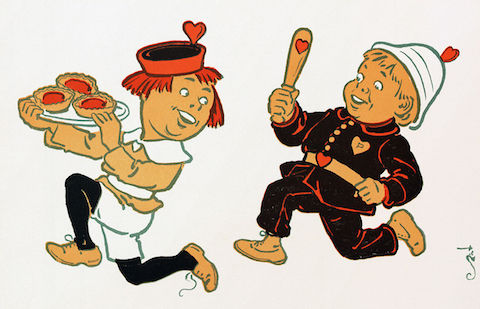I will quote you. I will cite you. I will not seek your approval.

If you publish content, online or off, you are a publisher. I am an author. I will cite your content and quote what you said. That’s how it works, regardless of any imaginary restrictions you think up.
Call it the fundamental principle of content. Every content marketer should know this.
Maybe you published a blog post. It includes a story about your company and what it did. It might include some statistics.
Maybe you have a white paper that I can download.
Maybe I am reading a copy of the research you published. Maybe I downloaded it from a vendor that had licensed it, or somebody shared it with me. It’s excellent work.
Maybe I interviewed you. At the start of my interview, I told you that the interview was on the record.
Maybe you tweeted.
Maybe you made a public statement at an event. Perhaps I was there, or maybe I saw it on a video online.
Maybe you got interviewed in a publication. Or published a press release.
In any case, I got access to true and interesting facts about you, your experiences, and your ideas. I was fascinated. I wanted to write about you and your ideas.
So now I am going to write my chapter (or my blog post, or my own white paper).
I will be including short quotes from you. I will give you credit. I will use your name and the name of your company. Because I am a responsible writer, if my original source was published, I am going to include a footnote or a link.
I will include descriptions of what you did and cite statistics that you published.
If I got this information from a reliable published source, I probably won’t check back with you. I may not even know you. But published facts from reliable sources are facts, and I will not be asking your permission to cite them. You cannot copyright, trademark, or own facts. I will give you credit, but not seek your approval.
My understanding of fair use is that I can use short passages from what you wrote, and cite your numbers if I want. If you think I can’t, what is your legal justification?
If I want to use your graphic in my book, I will ask your permission, first. That is only fair.
If your company has trademarked its name or the name of its products, I will not be putting a little ™ or ® symbol on that name in what I write. I will get the name right and capitalize it. People know it’s a trademark. It’s not my job to protect your trademarks when I write about you — and that’s why you don’t see “TM” all over the text of book chapters.
If I have interviewed you, I will show you what I wrote about you before I publish it. I am grateful for your help. But I do not share what I wrote to get your approval. The interview was on the record, so I don’t need your approval. As a courtesy, because it is what professionals do, I will ask you to check the facts and verify the quotes. I don’t want to misrepresent you or the truth.
You can, of course, publish whatever rules you want on your Web site. In theory, you can put a disclaimer in the small print on your site about needing to approve anything written about you. Is that how you want to spread the word about your ideas? When you published the content on your site, weren’t you hoping people would write about it?
I will. I just don’t need your approval and review to do it.
This is my understanding of how copyrights work, how trademarks work, and how reasonable people interact in a world where everyone is a publisher. If you think it isn’t, please let me know on what basis you imagine things to be different.
Let’s act like publishers. Let’s act like marketers. Let’s tell each other’s stories.
Let’s not act like adversaries. Because this is how publishing works now.
I agree. But, don’t quote me on that ™.
Wow — a drawing by W. W. Denslow! He was a prominent poster artist and book designer in the late nineteenth and early twentieth centuries, but is best remembered today for having been the original illustrator of The Wonderful Wizard of Oz. How did you come to choose this illustration for today’s post?
I do various image searches, focusing on public domain graphics and other graphics with a creative commons license. Then I just see what hits me.
This post isn’t about stealing tarts. But it’s about people who think you’re stealing something . . . .
I’m just guessing that some real-world issue prompted this. I share your views. And I think your understanding of fair use is sound. The only place where we diverge is I will, on first reference, often include a trademark or registered trademark symbol. But I have to admit this is mostly because it gives me an excuse to look up the thing and see if it’s one or the other and exactly how it’s formed, which is more a type of creative procrastination or saw sharpening than anything else.
Sure, I guess. But when you write about another company’s products, there is no obligation to mark their trademarks in what you write.
interesting article on the IP symbols and usage: https://www.forbes.com/sites/work-in-progress/2014/03/12/when-and-how-do-i-have-to-use-trademark-symbols/#32fe223bc0af that touches on use by others. But you learn so much from the discussion on the use by owners.
This article says what trademark owners should do. It doesn’t bear on people writing about trademarked products of others, who are under no obligation to use the symbols at all.